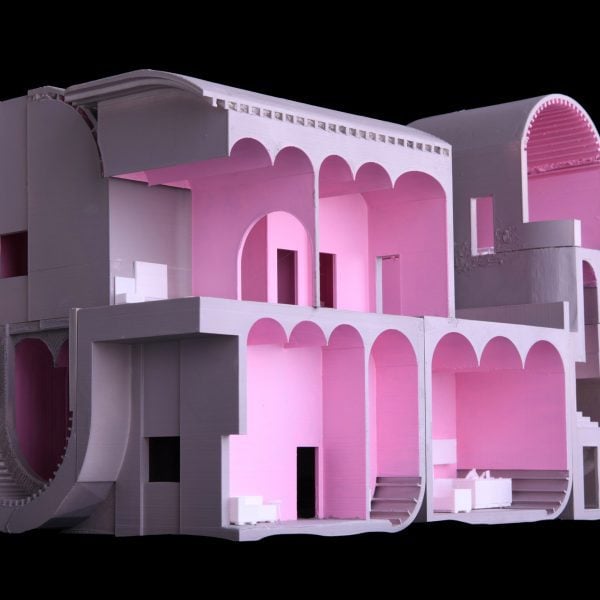Dezeen School Shows: a proposal for fire-resistant housing in response to climate change in Texas, USA, is featured in Dezeen’s latest school show by students at Texas A&M University.
Also included is an education centre that focuses on timber production and a project exploring space habitation using lunar materials.
Institution: Texas A&M University
School: Department of Architecture
Course: Bachelor Architecture (1st, 2nd, 3rd, 4th year) and Master Architecture (1st, 2nd year)
Tutors: Alejandro Borges, Weiling He, Livia Loureiro, Davi Xavier, Benjamin Ennemoser, Andrew Tripp, Fabrizio Aimar, Tyrene Calvesbert, Ahmed Ali, Andrew Hawkins and Koichiro Aitani
School statement:
“As part of a vibrant academic community, the Department of Architecture at Texas A&M University is deeply committed to shaping the future of architecture through innovative education, cutting-edge research and strong professional partnerships.
“Our graduates leave ready to enter the field and lead it, equipped with the skills and knowledge to make a lasting impact on the built environment.
“From the Bachelor of Science in Architecture to the PhD in Architecture, our curriculum emphasises critical thinking, design innovation and interdisciplinary collaboration.
“Direct connections with industry leaders enrich our programmes through initiatives, with our specialised centres strengthening these connections, including the Centre for Health Systems and Design, the Centre for Heritage Conservation and the CRS Centre for Leadership and Management in the Design and Construction Industry.
“With by a computation and technology-driven curriculum, students can participate in the Integrated Path to Architecture Licensure programme, significantly reducing the time needed to become a licensed architect. The programme’s emphasis on collaboration, problem-solving and global perspectives further prepares graduates for success in an increasingly complex and interconnected world.
“The NAAB-accredited Master of Architecture programme continues this trajectory, integrating ecological, technological and social contexts into the design process, enabling students to tackle contemporary challenges in architecture from sustainable design to heritage conservation.
“For those interested in research and academic careers, the MS in Architecture and PhD in Architecture programmes offer a research-based approach to architectural studies, encouraging the exploration of topics such as design computation, digital fabrication, sustainability and more, often in collaboration with our research centres.
“Our students also have the exciting opportunity to enhance their global perspectives through study abroad experiences in Florence, Italy and Barcelona, Spain. These experiences, coupled with internships, provide an immersive, practical experience that bridges academic learning with professional practice, preparing our students for a truly global career in architecture.”
First Year Studios by Ivliana Nieto Alvarez
“The beginning design studio focuses on developing the student’s ability to understand and visualise space by challenging preconceived notions of architecture.
“Through a series of exercises, the studio introduces students to fundamental principles of spatial composition, grids as organising principles, and the concepts of poche and figure-ground relationships.
“The studio emphasises the design process, where two and three-dimensional elements are used as precise tools for spatial investigations, conceptually and physically connected to the final product.
“The studio also introduces the concept of research in architecture, focusing on an analog and spatial understanding of architectural artefacts to inform their graphical representations and modelling outputs.
“The final project introduces the functional conditions of architectural assemblage that address place, scale, tectonic elements and spatial organisation as interpretative architectural and urban space generators that help students deeply understand architectural design and composition.”
Student: Ivliana Nieto Alvarez
Course: BS Architecture (Year 1)
Tutors: Alejandro Borges, Weiling He, Livia Loureiro and Davi Xavier
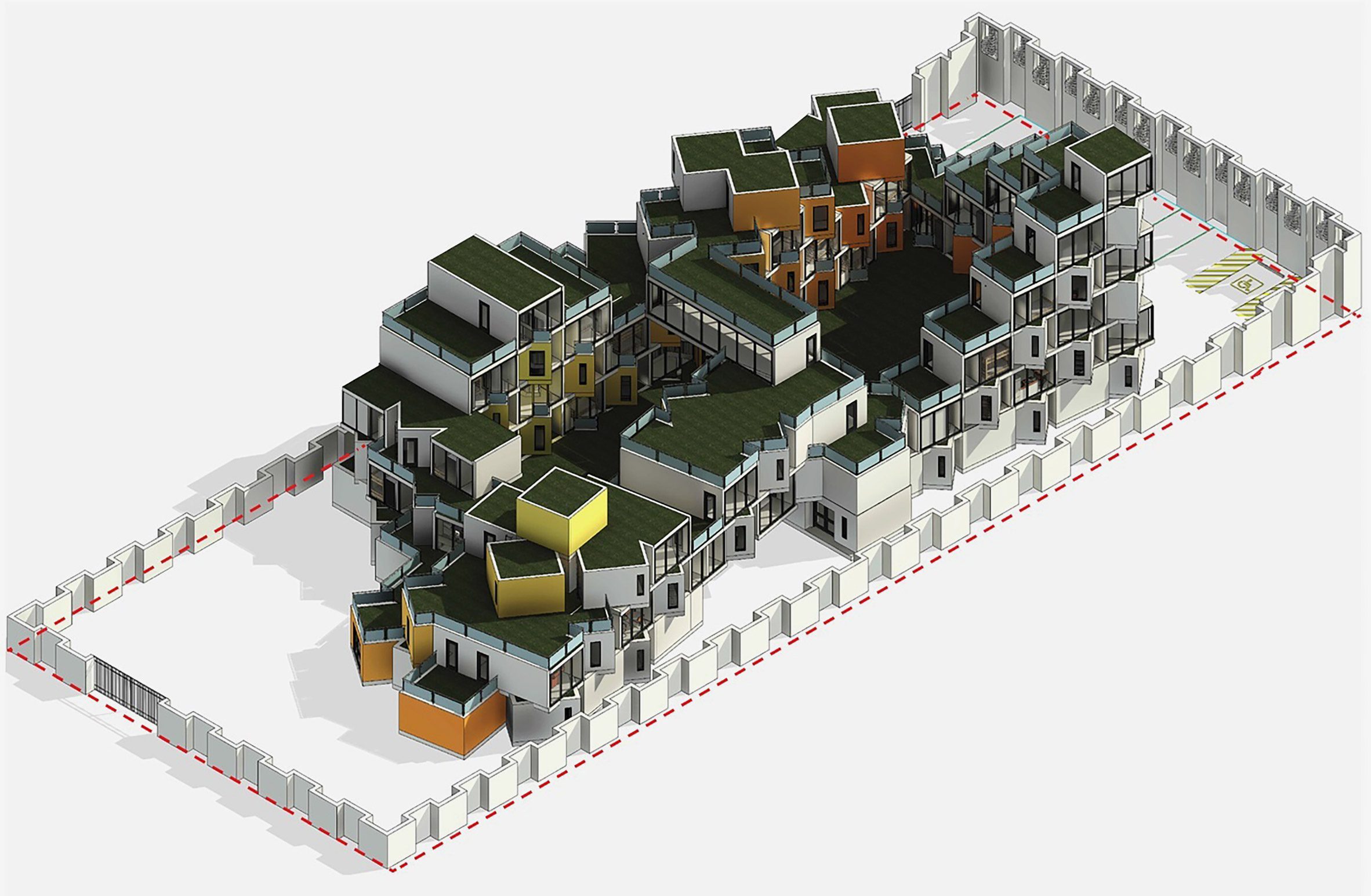
Dallas 2050: Design for Climate Change Adaptation by Yaremi Mendoza
“Dallas, Texas, faces significant vulnerabilities driven by climate challenges – extreme heat, drought, decreasing humidity and unpredictable precipitation patterns – with 35 to 37 per cent of its buildings at risk of wildfire and 15 per cent at risk of flooding.
“According to recent research by Clark et al., a large influx of Americans have moved into regions like Texas, causing climate-related hazards like wildfires and extreme heat to become more common, as well as the urban expansion into rural areas causing heightened risk due to closer proximity to vegetation.
“The studio addressed these critical issues by exploring innovative architectural solutions that respond to wildfire risks, focusing on designing resilient housing and urban infrastructure that can withstand fire and other climate-related impacts.
“Integrating fire-resistant materials, sustainable design practices, passive cooling systems and green-blue infrastructure to mitigate heat islands, emphasising resilience and mitigation strategies, the studio equipped students with a deeper understanding of urban climate challenges and the skills to design sustainable, climate-adaptive environments.
“The projects contributed to Dallas’ broader efforts to enhance neighbourhood resilience in the face of escalating climate risks.”
Student: Yaremi Mendoza
Course: BS Architecture (Year 3)
Tutors: Fabrizio Aimar
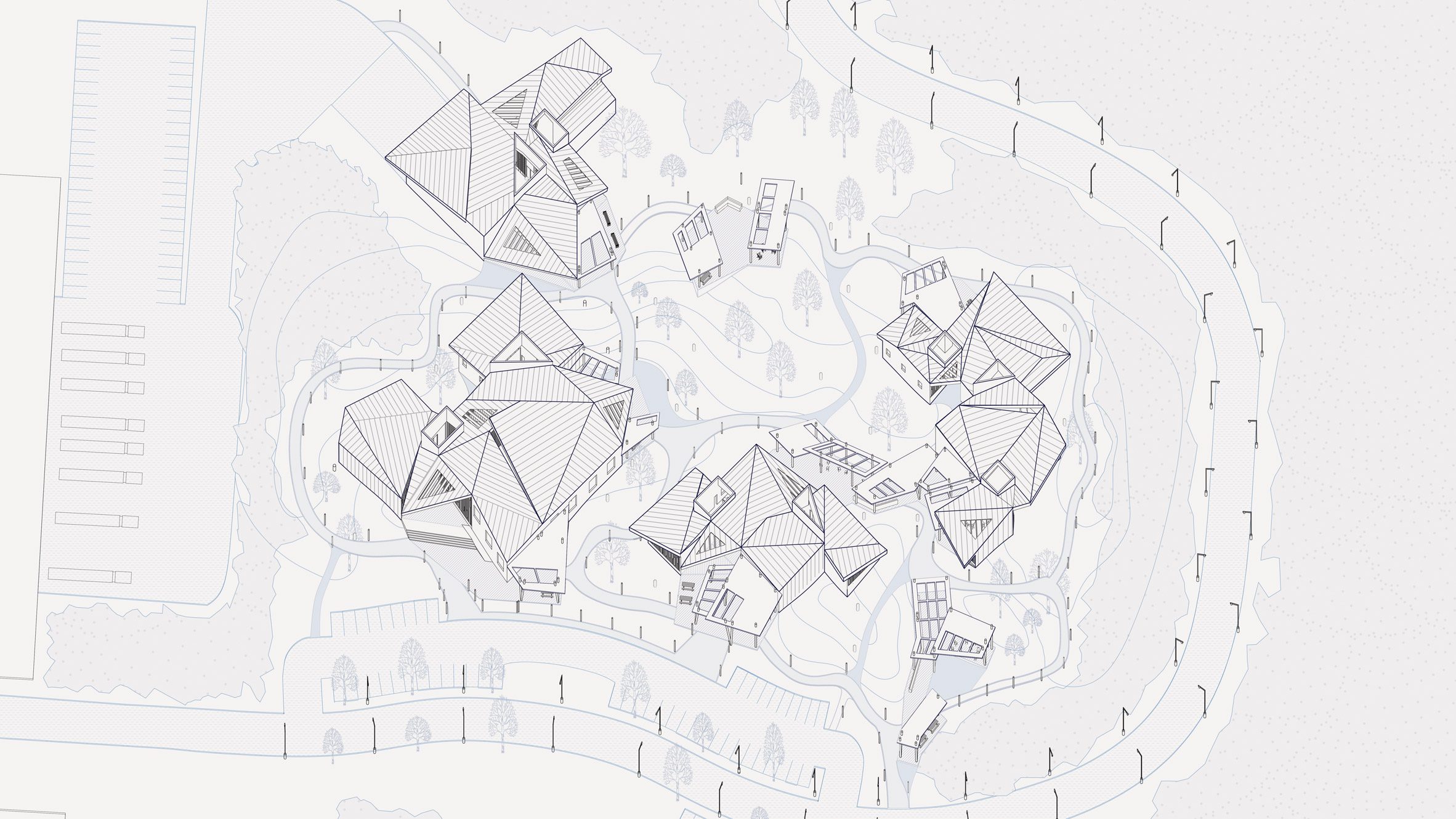
Fostering local industry through educational partnerships for Jefferson City, Texas by Macy Sweat, Pablo De La Garza and Mary Sweet
“This project proposes a revitalization strategy by merging education with industry in Jefferson, Texas, a town facing population decline and limited local industry.
“The initiative includes creating an educational programme centred on timber and woodcraft, featuring a production site and a dedicated learning hub located near existing industry leaders.
“The academic site, designed to evoke the essence of a forest with its diverse programming spaces and connecting patios and pavilions, aims to bridge the gap between education and industry while fostering local job opportunities and economic growth.”
Students: Macy Sweat, Pablo De La Garza and Mary Sweet
Course: BS Architecture (Year 3)
Tutor: Tyrene Calvesbert
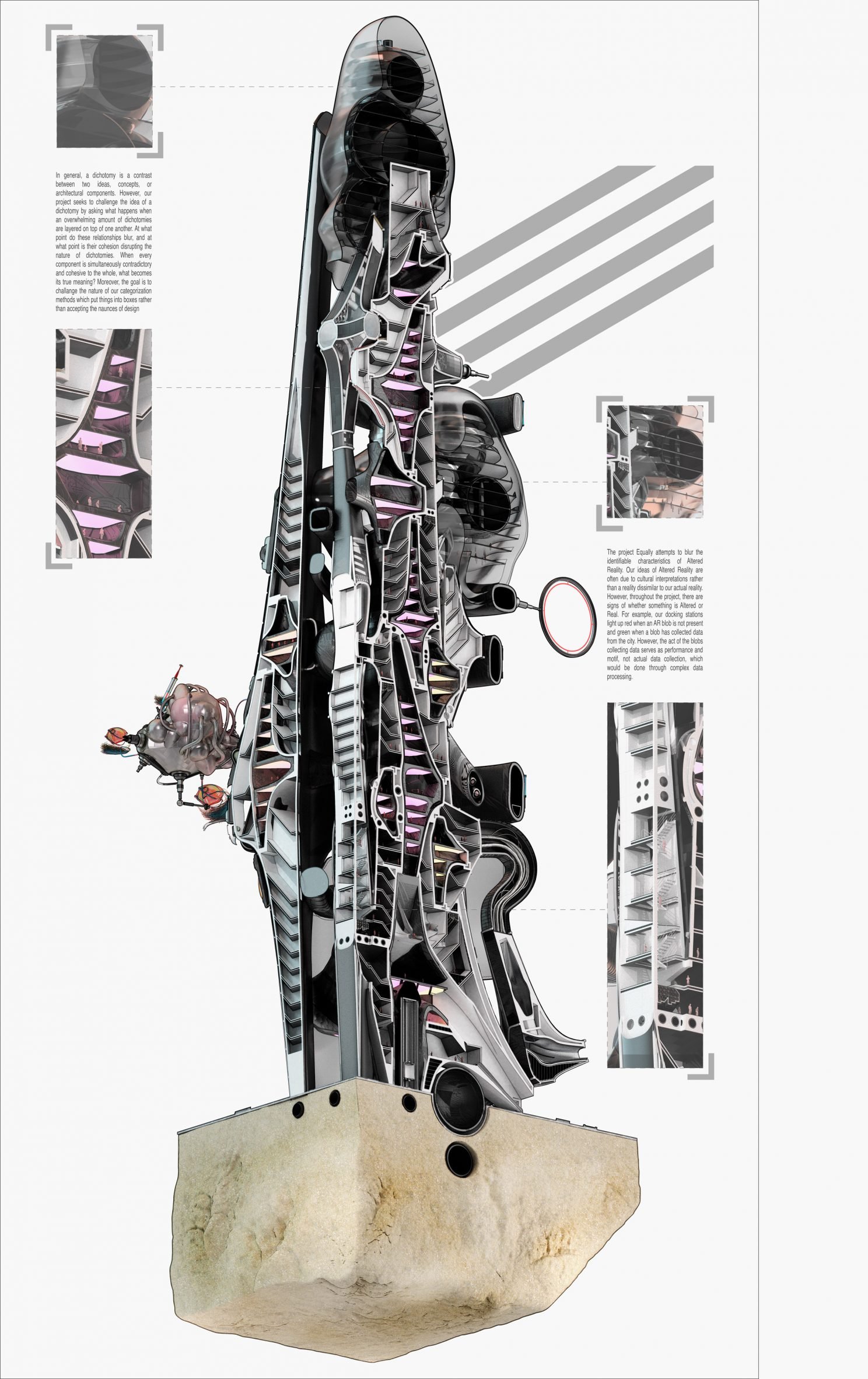
Ai4All Headquarters by Quinn McCormack, Brianna Westbrook and Cassie Moseley
“This studio focuses on using artificial intelligence (AI), including machine learning and deep learning, exploring how these can serve as a design collaborator and generative design tools for architecture, developing concepts related to spatial hierarchies, materiality, structure, form, programme and aesthetics using ML and DL as operative frameworks.
“During the first two weeks of the semester, the students collected, analysed and evaluated architectural precedents provided by the instructor and presented research on selected architectural projects at multiple scales.
“Faculty-supplied weekly technology tutorials, workshops and guest lectures by external experts enriched the collaborative learning environment, enabling further study.
“Students worked in teams to design a high-rise headquarters for Ai4All in Downtown Los Angeles; the project emphasised human-machine collaboration, with AI playing a central role in shaping the design.
“The tower, ranging from 800 to 1,200 feet, seamlessly integrates Ai4All’s values into its urban context; promoting AI access for underrepresented groups, data justice and fairness, emphasising the building’s ground condition, public and private spaces and overall form.”
Student: Quinn McCormack, Brianna Westbrook and Cassie Moseley
Course: BS Architecture (Year 4)
Tutor: Benjamin Ennemoser
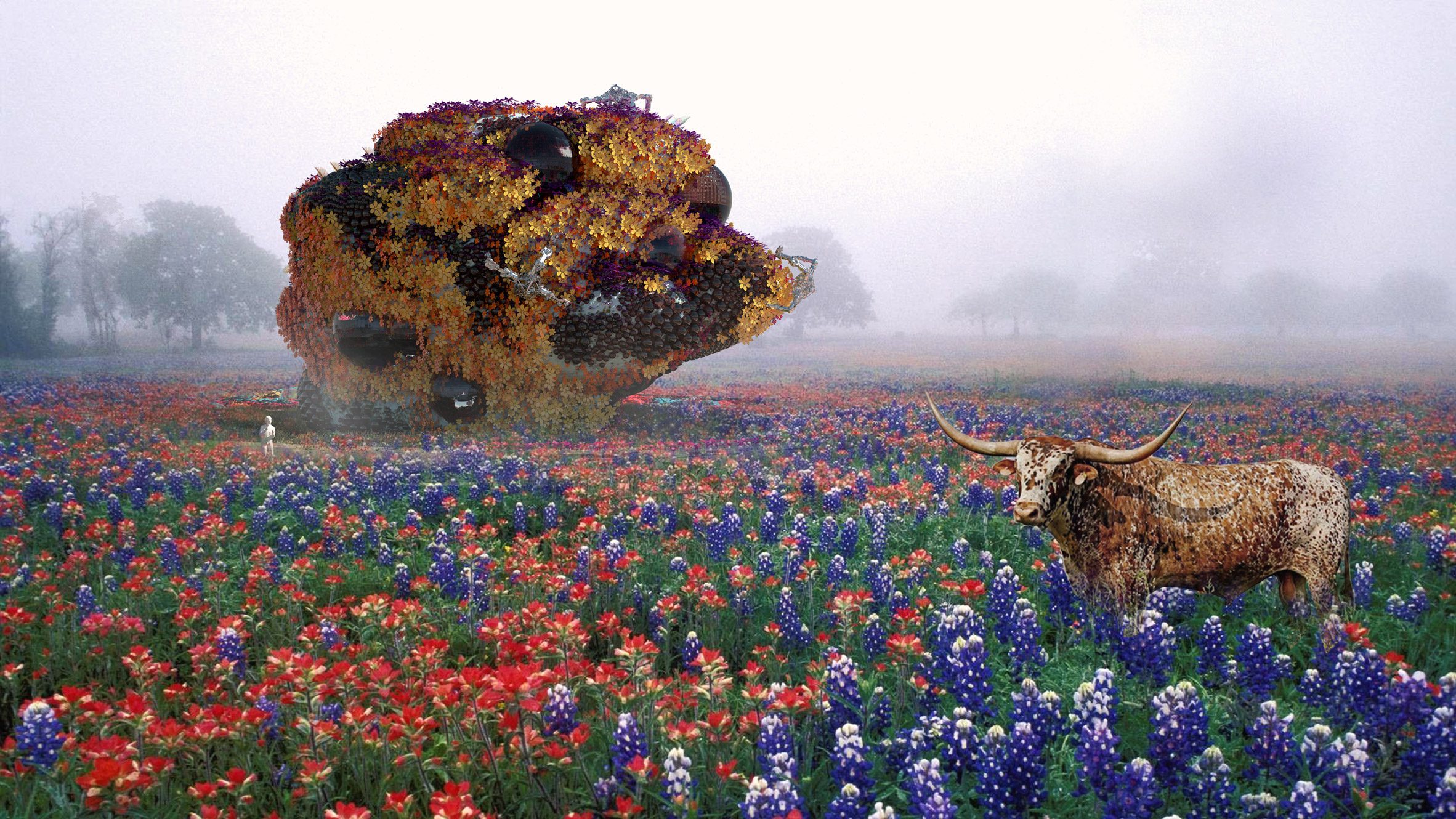
Digital Nomad 4.0 by Carmen Jimenez, Stefany Rodriguez and Darielle Barrera
“This studio explored the potential of human-machine collaboration, automation, artificial intelligence and robotic fabrication within the discipline of architecture, set against the backdrop of the fourth industrial revolution.
“The project is situated within our post-pandemic society and addresses the issues and developments that emerged due to the covid-19 pandemic, particularly regarding remote working and housing.
“Although new remote technologies facilitated this transition, most home architectural typologies have yet to respond to such a dramatic paradigm shift.
“The studio leveraged this shift towards hybrid typologies of work and home to generate prototypes for future architecture – based on this premise and the influx of tech companies into the Texas Triangle, the project site occupies the heart of this growing region, which today is primarily rural and not within 40 miles of a larger city.
“The project brief requires designing a single-family home no larger than 3,000 square foot, with adequate spaces for remote working and other facilities that enable the building to be fully autonomous using the latest technological innovations.”
Student: Carmen Jimenez, Stefany Rodriguez and Darielle Barrera
Course: BS Architecture (Year 4)
Tutors: Benjamin Ennemoser
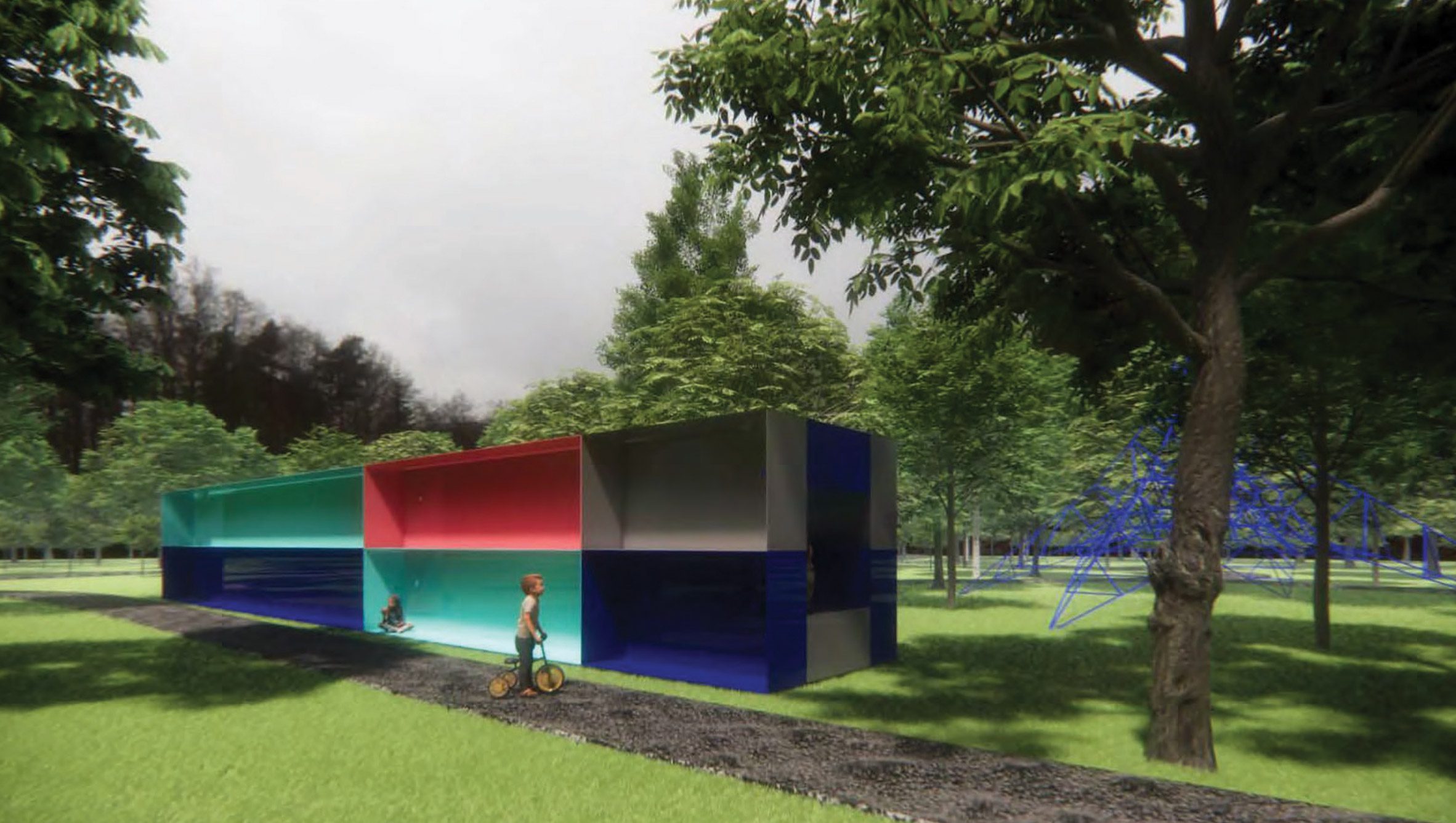
Art for Architecture, Architecture for Art by Savannah McDougal
“The fall master of architecture design studio explored the intersection of art and architecture through a three-part investigation inspired by Donald Judd’s work in metal and his philosophies on space and materiality.
“Students began by studying Judd’s sheet metal experiments and writings on the relationship between art and architecture.
“Through hands-on fabrication at the Rellis campus, students replicated Judd’s work using galvanised sheet metal, utilising digital and manual fabrication techniques such as waterjet and CNC – this exercise challenged students to explore the connection between material innovation and architectural form, culminating in a written argument addressing the lessons learned.
“The students then took a field trip to Marfa, Texas, to experience Judd’s work in its intended context and understand the importance of site-specificity and authenticity in art and architecture.
“The final outcome is a designed a multi-story building in Dallas, Texas, inspired by Judd’s principles; a community hub for metalwork and crafts, balancing function with art, providing large workshop spaces, open floors and environmentally controlled environments.”
Student: Savannah McDougal
Course: Master Architecture (Year 1)
Tutor: Ahmed K. Ali
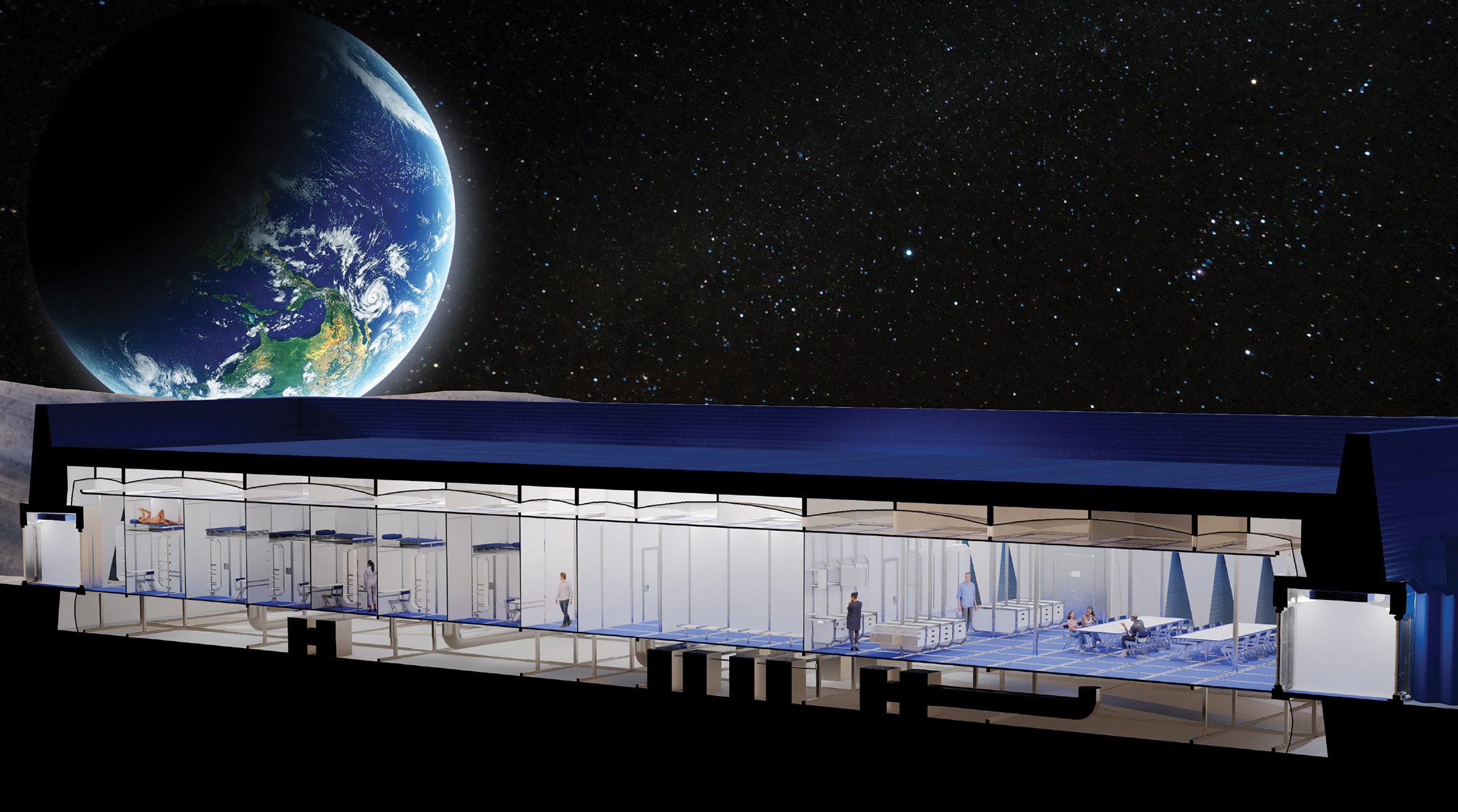
Pit of the Moon by Wyatt Springer
“Scientists and architects have long dreamed of establishing a lunar colony, with recent advancements like the NASA artemis missions bringing this dream closer to reality.
“This project explores solutions like modular design and using lunar materials to address the challenges involved, presenting an innovative approach to lunar habitation.
“The studio’s interest in space exploration, driven by interstellar travel, positioned the moon as an essential step toward colonising other planets, proposing design questions for the project that centre around the transportation of resources and ensuring mental and physical comfort for inhabitants.
“The studio site analysis suggested that the Shackleton Crater at the moon’s south pole was the optimal location due to its water ice resources and prolonged exposure to sunlight for energy production.
“The project focused on living, research, and exploration functions that utilised integrated compact, modular systems and 3D-printed structures from lunar materials, with the resulting prototypes yielding flexible and expandable design schemes that can adapt to future colonisation efforts beyond the moon.”
Student: Wyatt Springer
Course: Master Architecture (Year 2)
Tutors: Andrew Hawkins, Koichiro Aitani and Benjamin Ennemoser
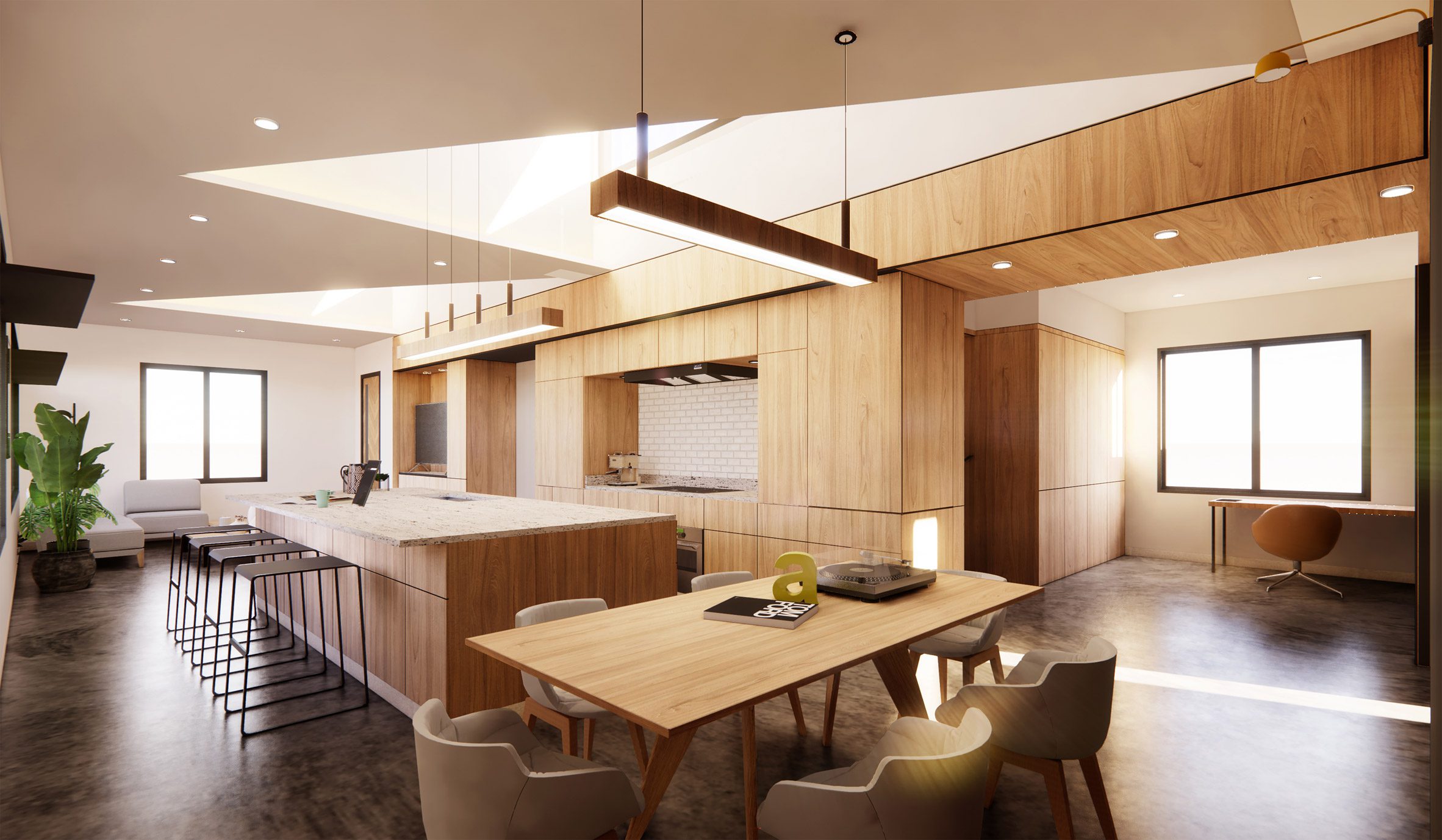
Solar Texas – Netzero begins at home by Chloe Boerner, Danking Bhujel, Trista Cisco, Oliver Garcia, Mariam Habib, Bryce Inmon, Billy Jones, Jaechang Ko, Angel Luna, Megan Miller, Jeel Patel, Mahendrabhai Patel, Daniel Perez, Brad, Rodriguez, Jack Seibert, Zachary Shilling, Lee Stimson, Kevin Tinico and Ethan Van Staden
“In collaboration with the Bryan and College Station non-profit Habitat for Humanity, Solar Texas provides sustainable housing solutions and uplifts individuals grappling with economic adversity, as a net-zero energy-generating workforce house.
“Solar Texas transcends architecture to foster community empowerment, lifelong learning opportunities and holistic wellbeing for economically vulnerable populations, enhancing their quality of life.
“By integrating passive design strategies with innovative technology, Solar Texas aims to create spaces that conserve energy and empower residents to thrive in a changing climate landscape; our vision extends beyond housing units to envision a vibrant community built on principles of environmental stewardship and collective wellbeing.
“Our team set a benchmark for energy efficiency and carbon neutrality through meticulous design features and sustainable practices, exemplifying our dedication to combating climate change and promoting sustainable living.
“Solar Texas received the prestigious Director’s Award at the 2023 Solar Decathlon, a testament to our project’s impact and performance credibility; of the 197 international teams, it finished fifth in energy, seventh in architecture and 11th overall, demonstrating the house as a catalyst for change that fosters sustainable communities and redefines the future of affordable housing.”
Students: Chloe Boerner, Danking Bhujel, Trista Cisco, Oliver Garcia, Mariam Habib, Bryce Inmon, Billy Jones, Jaechang Ko, Angel Luna, Megan Miller, Jeel Patel, Mahendrabhai Patel, Daniel Perez, Brad, Rodriguez, Jack Seibert, Zachary Shilling, Lee Stimson, Kevin Tinico and Ethan Van Staden
Course: MS Arch (Year 1/2)
Tutors: Gregory Luhan, Zofia Rybkowski, Filza Walters, Juan-Carlos Baltazar and Liliana Beltran
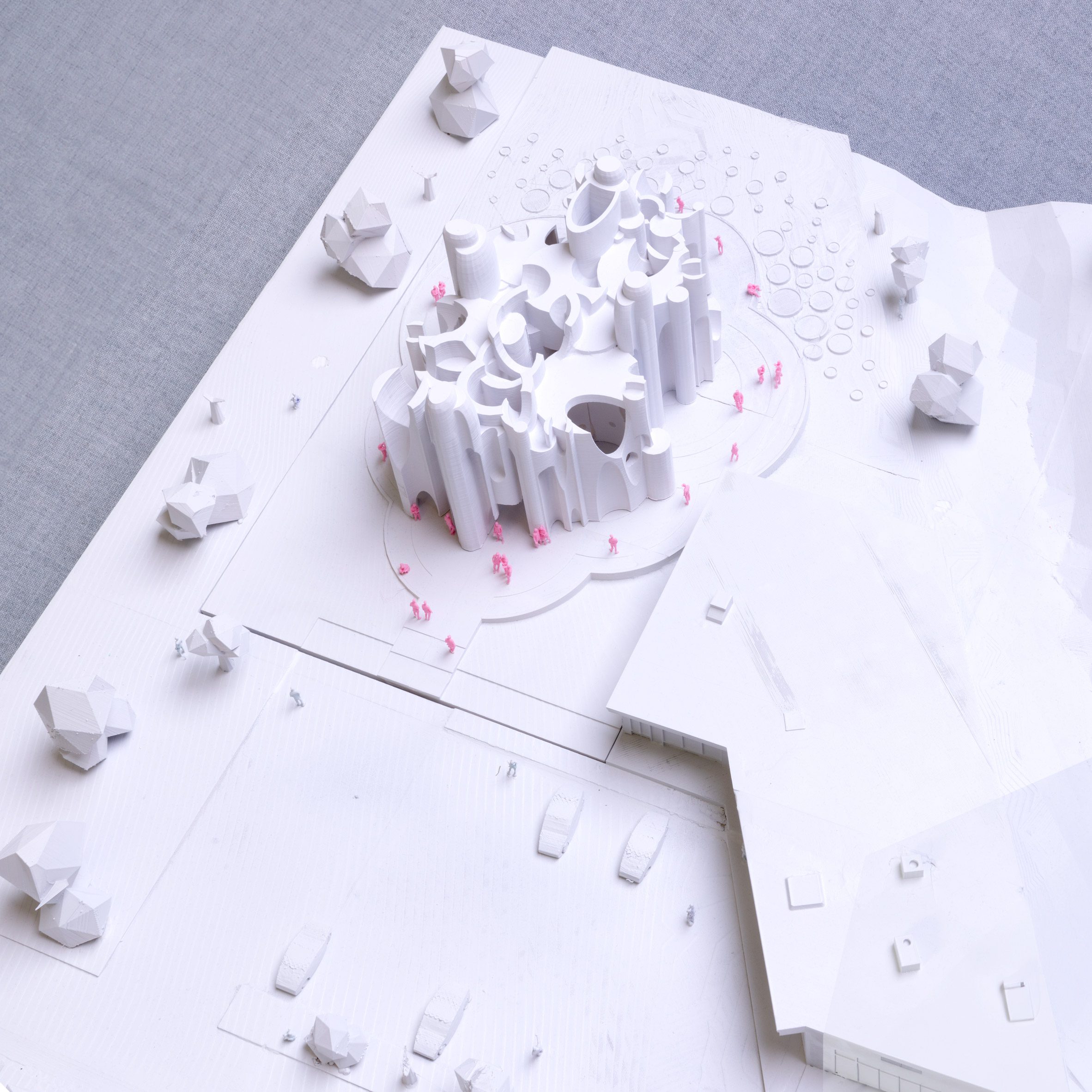
AI-Techno Chapel by Madeline Rejda, Sabrina Parker and Riley Leger
“The AI-Techno chapel proposes a paradigm shift in architecture that often aligns with technological advancements, as seen during the first and second digital revolutions, which redefined formal, spatial and programmatic norms.
“This ARCH 205 section explored historical principles, hierarchies, precedents and architectural components within chapel typologies, using technology to inform the design process.
“Students were asked to create a chapel in Austin, Texas, incorporating technological advancements, focusing on artificial intelligence for architectural design.
“The studio included a field trip to the Dallas-Fort Worth area, where students a visited chapel precedents and civic buildings that reflected critical architectural periods and movements.
“Throughout the course, students developed vocational skills and conceptual ideas around space, hierarchy and rhythm and learned how to convey these concepts in architectural drawings and representations.”
Students: Madeline Rejda, Sabrina Parker and Riley Leger, photography by Prof Marcel Erminy
Course: BS Architecture (Year 2)
Tutor: Benjamin Ennemoser
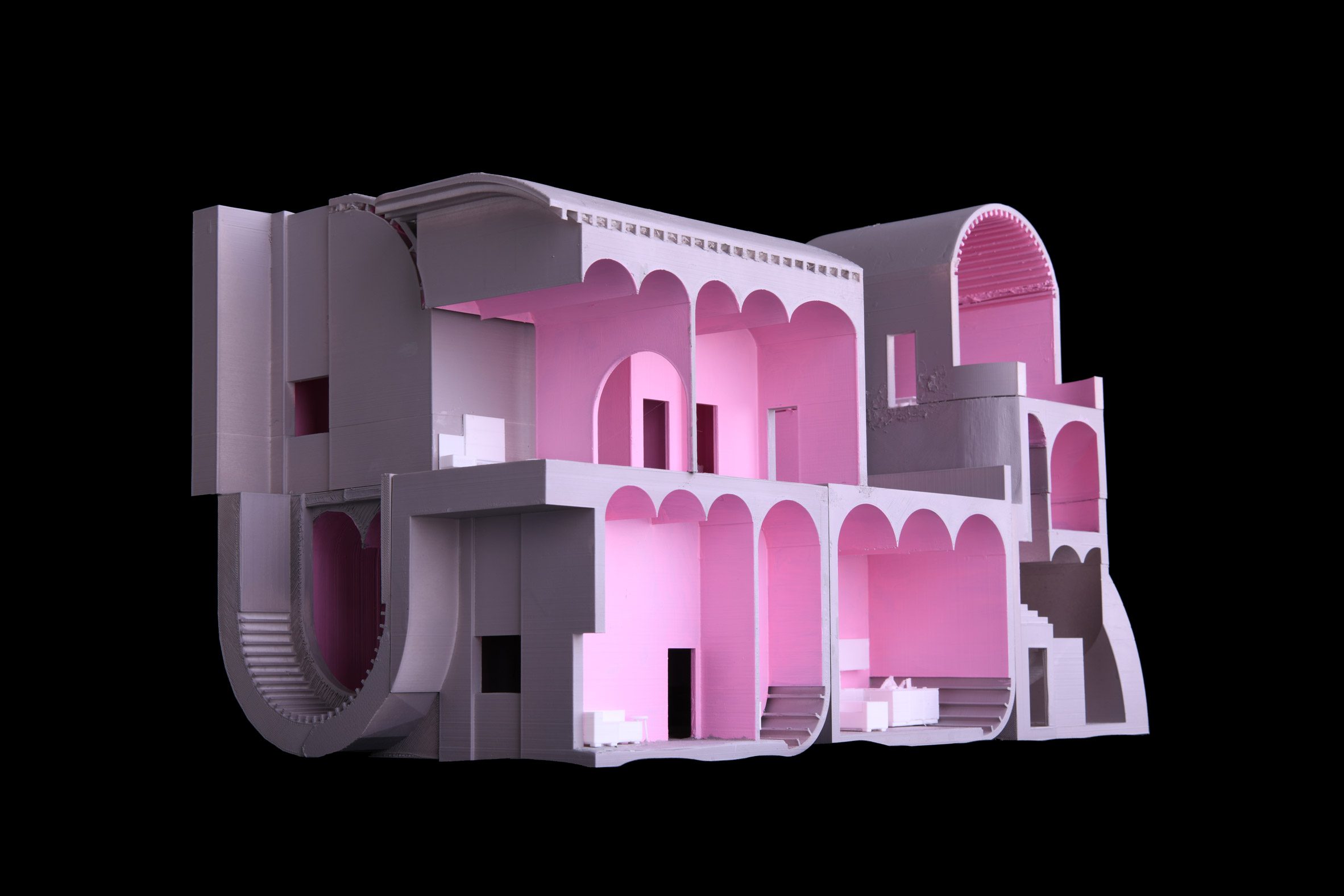
Copy/Order/Repeat by Farida Shehata, Renata Osorio, Rachel Ratcliffe and Giselle Sosa
“The 206 design studio stands out as a unique platform for architectural exploration; challenging students to develop innovative architectural ideas and designs within the context of co-housing in Austin, Texas.
“This semester’s design problem utilised the programme of a small infill housing complex on a prototypical suburban lot to introduce students to one of architecture’s oldest obsessions of repetition through the lens of defining a set of rules that emphasise modulation, combinations or variation.
“These proposals showcase a sophisticated cross-pollination of form, space and material, demonstrating how these elements coalesce to form innovative solutions within the housing typology.
“Students’ comprehensive exploration and novel perspectives contribute significantly to architectural design and housing discourse, inspiring with their innovative solutions.
“The active role of students in shaping the future of architecture is a source of hope and optimism, demonstrating the field’s potential for positive change and innovation.”
Students: Farida Shehata, Renata Osorio, Rachel Ratcliffe and Giselle Sosa, photography by Prof Marcel Erminy
Course: BS Architecture (Year 2)
Tutors: James Michael Tate and Benjamin Ennemoser
Partnership content
This school show is a partnership between Dezeen and Texas A&M University. Find out more about Dezeen partnership content here.

